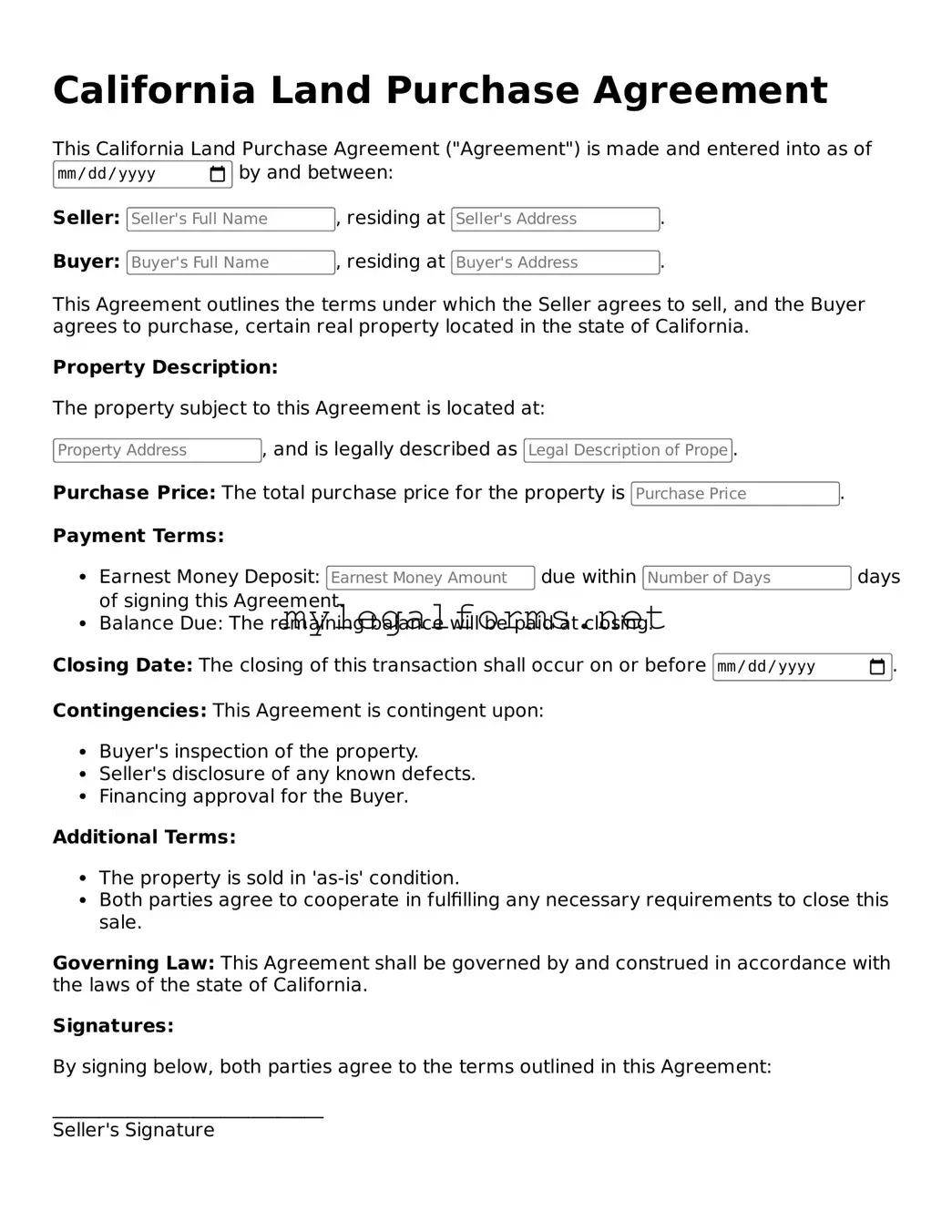Land Purchase Agreement Document for California State
A California Land Purchase Agreement form is a legal document that outlines the terms and conditions for buying and selling land in California. This form serves to protect both the buyer and the seller by clearly stating the obligations and rights of each party involved. Understanding this agreement is essential for anyone looking to navigate the real estate market in California.
Launch Land Purchase Agreement Editor
